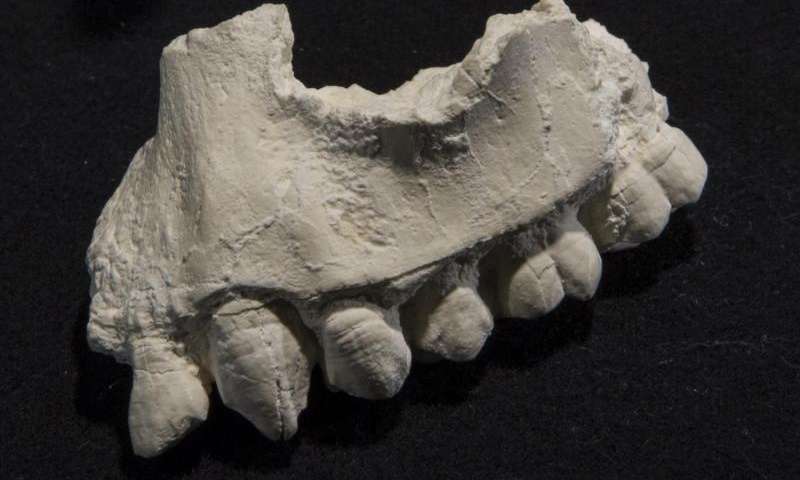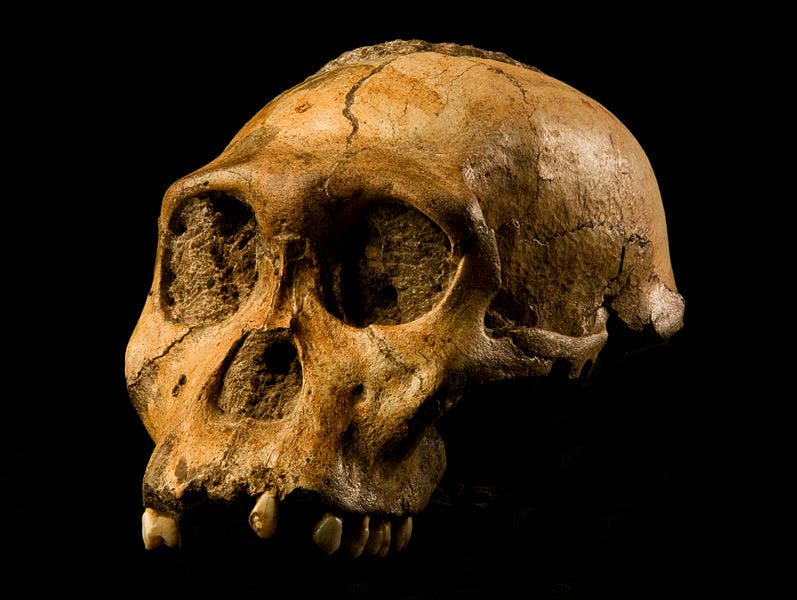In 1974, anthropologists found a 40% complete skeleton of a female which they identified as a pre-human species; they called her Lucy. Lucy is estimated to have lived 3.2 million years ago, she is classified as a hominin, and she is without a doubt one of the most important findings in history. Now, scientists have found another skeleton not only from the same period, but from the same area – which indicates that Lucy shared her territory with other evolutionary cousins.

Lucy is part of a species we now call Australopithecus afarensis, dated to between 3.7 million and 3.0 million years ago. This is actually a crucial date for human evolution, with the first stone tools emerging 3.3 million years ago. The first Homo species also evolved almost 3 million years ago, and with the proximity in time, geography and the emergence of tool usage, it seems that Lucy’s species actually foreshadowed the Homo. But species diversity might have been greater than anticipated.
A team led by Yohannes Haile-Selassie, a paleoanthropologist at the Cleveland Museum of Natural History in Ohio, reports uncovering bones and teeth belonging to a new species, just 35 kilometers away from where Lucy was found. They call it Australopithecus deyiremeda. Just imagine, two similar, hominin species living at the same time, so close to each other; that’s like humans living side by side another type of humans. That scenario seems unbelievable, but it’s likely what happened, and Selassie explains why:
“There is some evidence that during the middle Pliocene time period (about 3.3 million years ago) when multiple hominins (early humans) were running around, there were rivers supporting gallery forests that laterally extend to woodlands and grasslands. It was an ecosystem that supported numerous and varied habitats,” he continued. “With niche partitioning, a number of related taxa can co-exist in such an ecosystem.”
However, for all their similarities, they also had differences.
“If enamel thickness and jaw robusticity are any indications of dietary adaptation,” Haile-Selassie says, then A. deyiremeda “was probably adapted to harder, tougher, and more abrasive dietary resources,” such as tough plants and grasses, than Lucy’s species.

Furthermore, even if they co-existed at the same time, it doesn’t mean that they also emerged at the same time. It’s also not clear if the two species had the same level of development and sophistication – one of them might have been significantly more advanced than the other. After all, they occupied different ecological niches. The behaviors and development of these species is now the main point of interest for anthropologists, but unfortunately, it’s one that’s going to be enormously difficult to understand.
“It is remarkable to have two closely related species that appear to have lived in the same area, during approximately the same time period,” said Fred Spoor of both the Max Planck Institute for Evolutionary Anthropology and University College London, and author of a “News & Views” article in Nature about the find. “This raises the important question whether and how they differed in their behavior, diet or other ways that made long-term co-existence possible.”
But as always with new hominin species, there is always some controversy. William Kimbel, a paleoanthropologist and Lucy expert at Arizona State University, Tempe, says when comparing Lucy and the new species, “the distinctions in my view are pretty subtle.” Anthropologist Tim White of the University of California, Berkeley, is even more skeptical.
“The slight anatomical differences noted in this case fall short of demonstrating biological species diversity,” he says. “Lucy’s species just got a few more new fossils.”
However, others are more convinced. Carol Ward, an anthropologist at the University of Missouri, Columbia, says that the claim for a new species is certainly reasonable, although she thinks more specimens will be needed to make a truly valid comparison. “There is definitely diversity” in the human relatives of this time, meaning that Lucy probably was not alone, Ward says.
“This flexibility may have been a key reason for the success of what now appears to be an early radiation” of human relatives, out of which Homo ultimately arose, Ward adds.
But what seems to be clear is that hominin diversity was underestimated. While it’s still a matter of debate, new findings are starting to challenge long-held opinions, and it might not be long before we have to start rewriting a few chapters in anthropology books.
“This new species from Ethiopia takes the ongoing debate on early hominin diversity to another level,” Haile-Selassie concludes. “Some of our colleagues are going to be skeptical about this new species, which is not unusual. However, I think it is time that we look into the earlier phases of our evolution with an open mind and carefully examine the currently available fossil evidence rather than immediately dismissing the fossils that do not fit our long-held hypotheses,” said Haile-Selassie.
Journal Reference: Yohannes Haile-Selassie, Luis Gibert, Stephanie M. Melillo, Timothy M. Ryan, Mulugeta Alene, Alan Deino, Naomi E. Levin, Gary Scott & Beverly Z. Saylor. New species from Ethiopia further expands Middle Pliocene hominin diversity. doi:10.1038/nature14448






